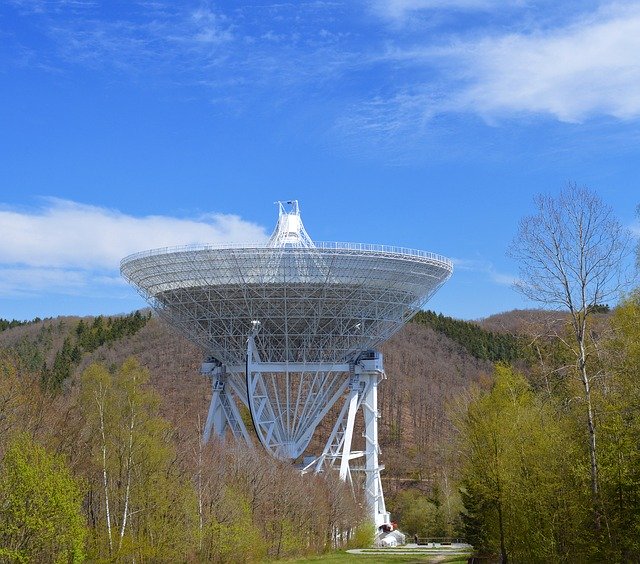Team of astronomers, using observational data from the Green Bank radio telescopes, APEX and the Australia Telescope Compact Array (ATCA), have discovered cold molecular gas in the Milky Way’s galactic wind. Previously, only hot and warm ionized gas with a temperature of 10 6 to 10 4 Kelvin was observed in it, as well as a cold atomic gas with a temperature of 10 3 to 10 4 Kelvin.
The center of the Milky Way, which is 8.2 kiloparsecs from the Sun, is ideal for studying complex physical processes, including those that accompany the galactic wind. It is believed that the current boundaries of such a wind are Fermi bubbles, two regions filled with hot gas that extend up to 10 kiloparsecs from the plane of the Galaxy.
To date, radio telescopes have detected several hundred neutral gas clouds inside, but it is unclear whether these clouds are a consequence of the same phenomenon that caused the bubbles. The clouds were discovered due to their abnormally high radial velocity, which is incomparable with the rotation of the galaxy and can be explained by the two-cone wind model, in which they rise from the center of the galaxy, reaching a maximum speed of 330 kilometres per second after about 2.5 kiloparsecs.
To understand whether these structures contain molecular gas, Enrico M. Di Teodoro from Johns Hopkins University and his colleagues examined two clouds (MW-C1 and MW-C2) in the 12 CO emission line at 230.538 gigahertz using 12- meter APEX radio telescope in Chile. According to observations of the Green Bank radio telescope, these two clouds have a relatively high columnar density (the mass of matter per unit area and integrated along the line of sight) of atomic hydrogen, and also have an elongated head-to-tail shape in the direction opposite to the center of the Galaxy.
Astronomers mapped both clouds in the 12 CO emission line and found molecular gas emanating from the center of the Galaxy. At the same time, 5 distinct compact foci of molecular gas were found in the MW-C1 cloud, concentrated towards the part of the cloud that looks at the center of the galaxy, and the typical line width is relatively low. In the second cloud, MW-C2 radiation is distributed along a filamentary structure with some fainter and more diffuse foci in a region opposite to the center of the Milky Way. The radiation is spread over a larger velocity range than in the first cloud. The observed features indicate that in the second cloud the cold gas interacts and mixes with the environment more efficiently than in the first.
Teodoro and his colleagues believe that the objects they studied observe different evolutionary stages of the cold cloud, which is destroyed during interaction with the hot stream. According to the model developed by astronomers, the second cloud is in the flow of the galactic wind about twice as long as the first – 7 million years versus 3 and moves faster – 300 kilometers per second versus 240 kilometers per second. The volume of molecular gas in the first cloud is estimated at 380 solar masses, and in the second – at 375 masses, while the researchers note that these are the lower bounds of the estimate, and the mass of such gas can be ten times greater. This cold outflow influences the gas cycle in the inner part of the Galaxy and may represent an important mechanism that regulates star formation activity in Central molecular zone.
Such a huge volume of high-velocity molecular gas is perplexing, the authors of the article believe. The fact is that the existing models of the galactic wind, which is supported by the active core, are based on very powerful sources. There is no model yet to explain that a relatively small black hole like Sagittarius A * can expel large volumes of cold gas, even if it is not very active right now. The rate of star formation in the Central Molecular Zone is also not large enough to explain the approximate level of outgoing cold gas, and there is no observational evidence that a change in rate sufficient to explain this has occurred in the past several million years. A scenario in which star formation in the galactic center occurs sporadically on a large scale (10-50 million years) and is now near the minimum, may help partially explain the observed and predicted volumes of cold gas in the galactic wind, although the model developed by Teodoro and his colleagues believe that such gas clouds live for less than 10 million years.
The work was published in Nature.
